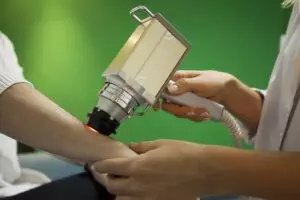Professional Botox treatments target crow's feet—fine lines around the outer eyes caused by muscle movement—by paralyzing specific muscles with botulinum toxin, reducing dynamic wrinkles for a smoother, more youthful complexion. With minimal downtime and lasting 3-6 months, these non-invasive procedures are a popular anti-aging solution, offering immediate results and safety record, especially when performed at a reputable clinic by skilled specialists. Post-treatment care involves avoiding strenuous activities and direct sunlight, maintaining hydration, and regular check-ins with a dermatologist.
Looking to banish those stubborn crow’s feet? Botox has emerged as a popular and effective solution for reducing dynamic lines around the eyes. This article delves into the science behind crow’s feet, exploring their causes and anatomical roots. We then uncover how professional Botox treatments work, highlighting their benefits in smoothing expression lines. Learn about choosing the right clinic, what to expect during the procedure, potential side effects, and essential follow-up care for lasting results.
Understanding Crow's Feet: Causes and Anatomy

Crow’s feet, a common concern for many individuals, are fine lines and wrinkles that appear at the outer corners of the eyes, often described as “11s” or “frown lines.” These delicate skin areas are highly susceptible to the effects of aging due to constant muscle movement during facial expressions. Understanding the anatomy of crow’s feet is crucial when considering professional Botox treatments. The skin here is thinner and more prone to showing early signs of aging, such as expression lines.
The primary cause lies in the overactivity of certain facial muscles, particularly the orbicularis oculi, which controls eye closure. As we age or make specific facial expressions, these muscles can create dynamic wrinkles. Professional Botox treatments can temporarily paralyze these muscles, reducing the formation of crow’s feet and providing a more relaxed and youthful appearance.
The Role of Botox in Treating Crow's Feet

Botox has emerged as a popular and effective solution for reducing the appearance of crow’s feet, those fine lines that often form at the corner of the eyes due to repeated facial expressions. Professional Botox treatments involve injecting a small amount of botulinum toxin into specific muscle groups around the eyes. This action temporarily paralyzes the muscles, preventing them from contracting and causing those telltale wrinkles. The result is a smoother, more youthful-looking complexion around the eyes.
Unlike surgical procedures, which can be invasive and carry potential risks, Botox offers a non-surgical approach with minimal downtime. It’s an excellent choice for individuals seeking a subtle yet noticeable improvement in their appearance without undergoing extensive facial surgery. With professional administration, the effects of Botox can last for several months, providing long-lasting benefits and allowing you to enjoy a more relaxed and youthful visage.
How Professional Botox Treatments Work

Professional Botox treatments work by injecting a small amount of botulinum toxin into specific muscle groups around the eyes and forehead. This toxin temporarily paralyzes the muscles, reducing the contractions that cause dynamic wrinkle formation, particularly when smiling or squinting. Over time, this relaxation leads to a smoother, more youthful appearance, specifically targeting the crow’s feet that form at the outer corners of the eyes.
The procedure is typically quick, often taking less than 30 minutes, and is usually well-tolerated with minimal downtime. A skilled provider will use fine needles to inject the toxin precisely into targeted areas, ensuring optimal results and minimizing discomfort. Multiple treatments may be recommended for optimal effect, as the effects of Botox can vary from person to person, typically lasting between 3-6 months.
Benefits of Using Botox for Crow's Feet

Botox has emerged as a popular and effective solution for reducing the appearance of crow’s feet—fine lines and wrinkles that often appear around the eyes due to muscle movement. One of the key benefits of using Botox for this specific concern is its ability to target and relax the specific muscles responsible for these wrinkles, offering a non-invasive approach to skincare. This treatment involves injecting a small amount of botulinum toxin into the affected area, which temporarily paralyzes the muscles, smoothing out the skin and minimizing the depth of wrinkles.
Professional Botox treatments not only provide immediate results but also offer long-lasting benefits. The effects typically last between 3 to 6 months, allowing individuals to enjoy a smoother, more youthful appearance without frequent treatments. This longevity is a significant advantage over other cosmetic procedures that may require repeated sessions for maintenance. Moreover, Botox is known for its safety profile when administered by qualified professionals, making it an appealing option for those seeking a minimally invasive way to combat the signs of aging.
Choosing the Right Clinic for Your Botox Treatment

When considering Botox for crow’s feet, choosing the right clinic is paramount. Look for a facility renowned for providing professional Botox treatments, with highly trained and certified specialists. Ensure they have an established track record, positive patient testimonials, and use high-quality, pharmaceutically-grade Botox products.
A reputable clinic will offer personalized consultations to understand your specific concerns and goals. They should provide detailed explanations of the procedure, address any questions or fears you may have, and tailor the treatment plan accordingly. Safety and comfort are key; a professional environment with sterile practices ensures minimal risk and maximum satisfaction with your Botox experience.
What to Expect During a Botox Procedure

During a professional Botox treatment for crow’s feet, a small amount of Botox is injected into specific muscles around the eyes. This procedure is typically quick, taking just 15-30 minutes, and is usually performed on an outpatient basis. The injections target the facial muscles responsible for frowning and squinting, temporarily paralyzing them to smooth out the fine lines and wrinkles that form over time.
After the treatment, you may experience mild redness, swelling, or bruising at the injection sites, but these side effects are usually temporary and subside within a few days. It’s important to remember that Botox is not a permanent solution; its effects last for several months, after which touch-up treatments may be necessary to maintain the results. Your healthcare provider will discuss the expected outcomes and potential risks during your consultation, ensuring you have realistic expectations from the procedure.
Potential Side Effects and Risks Associated with Botox

While generally considered safe, it’s crucial to be aware of potential side effects and risks associated with professional botox treatments for crow’s feet. Like any medical procedure, there’s always a chance of reactions, such as temporary redness, swelling, or bruising at the injection site. In rare cases, patients may experience headaches, muscle weakness around the eyes, or difficulty blinking. These side effects are usually mild and short-lived, but it’s important to discuss them openly with your healthcare provider before treatment.
Additionally, understanding that botox is a neurotoxin that relaxes muscles is key. Although targeted injections aim to smooth crow’s feet without impacting other facial expressions, unintended muscle relaxation could lead to a temporary droopy eye or a slight change in facial symmetry. These risks are typically minimal and resolve quickly, but open communication with your provider about expectations and potential outcomes is essential for ensuring a positive experience with professional botox treatments.
Maintenance and Follow-up Care After Botox Treatment

After receiving professional botox treatments for crow’s feet, proper maintenance and follow-up care are essential to maximize results and ensure a smooth healing process. It’s crucial to avoid strenuous activities, extreme temperatures, and direct sunlight for at least 24 hours post-treatment to prevent irritation and optimal absorption of the injectables.
During the weeks following your procedure, keep a clean, gentle skincare routine focused on hydration. Avoid makeup application directly on the treated areas until any redness or swelling has subsided. Regular check-ins with your dermatologist are vital to assess healing and address any concerns promptly. They can guide you on specific aftercare instructions tailored to your skin type and treatment outcomes.
